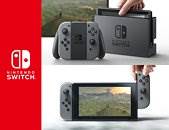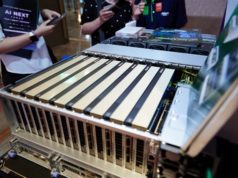After months of speculation, the lid is off Nintendo’s “NX” project, with the company finally announcing today its much-awaited games console, the Nintendo Switch. With an expected release slated for March 2017, the console blurs the line between a games console and a handheld device, by making use of a docking station which will allow it to connect to a television, much like a traditional games console, while instantly entering a so called “portable mode” when it is undocked. As both a console and a portable device, the Nintendo Switch will use cartridges known as Game Cards, displaying games in a “high definition display” embedded on the console while on the go, with two detachable Joy-Con controllers stepping in as input devices.
For PC hardware enthusiasts, that may not be all too interesting. What is arguably more interesting is that this games console will make use of NVIDIA hardware: most notably, a custom Tegra processor is the one pulling out all of the console’s processing needs, with the graphics being served by what the company calls “the same architecture as the world’s top-performing GeForce gaming graphics cards.”

According to an NVIDIA blog post, the Nintendo Switch’s gaming experience is supported not only by custom hardware design with its Tegra chip, but also by leveraging “fully custom software”, including “a revamped physics engine, new libraries, advanced game tools and libraries.” According to NVIDIA, new gaming APIs were created so as to fully harness the Tegra processor’s performance, with their newest API, NVN, being built specifically to bring lightweight, fast gaming to the masses. The console also features hardware-accelerated video playback, as well as custom software for audio effects and rendering. All of this is delivered through a custom operating system, devised for full system integration with the GPU in a bid to increase both performance and efficiency.
After having successfully embedded their technology in Microsoft’s XBOX One and Sony’s PS4 and upcoming PS4 Pro, as well as the troubled Nintendo Wii U, AMD had effectively achieved full control of the console gaming ecosystem (not counting the many Android systems in the same vein, such as the OUYA, for example). This design win by NVIDIA may come as a surprise, after a company representative’s past remarks regarding console’s design wins resulted in razor-thin margins, which was purportedly the reason NVIDIA chose not to pursue the XBOX ONE, PS4 or Wii U designs with their own technology. One could however argue that AMD’s IP portfolio was better suited for any one of those consoles, due to the company also being able to develop x86-x64 CPUs. At the same time, it can also be argued that NVIDIA’s own product line is, in this case, the best match for the Switch’s design philosophy, considering that the GPU technology integrated within the custom Tegra chip is almost certainly more energy efficient than AMD’s current offerings (considering, of course, NVIDIA’s Pascal undisputed energy efficiency over AMD’s latest GCN implementation). All things considered, though, it does seem like AMD still has control of the living room – at least when it comes to their respective implementation’s power levels and PC-relevant characteristics.


Source: NVIDIABlogs, Nintendo Switch







